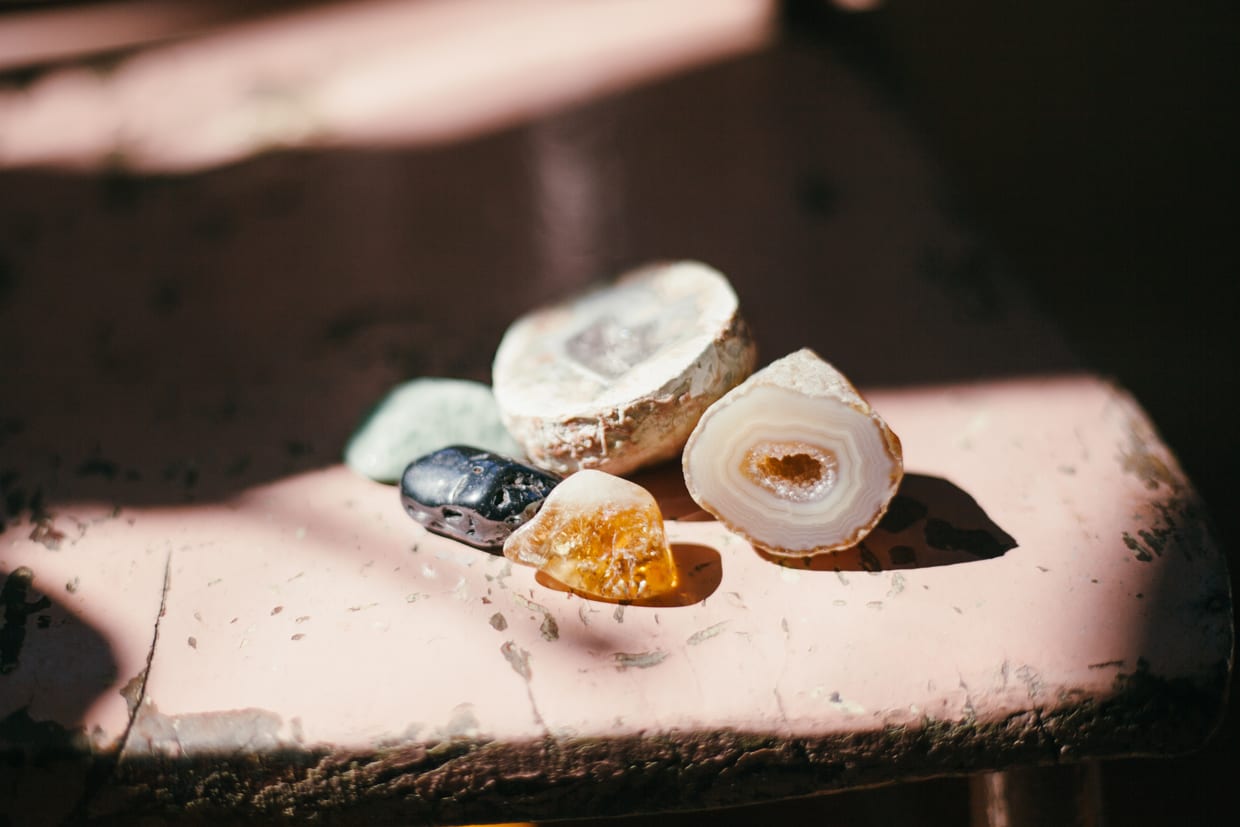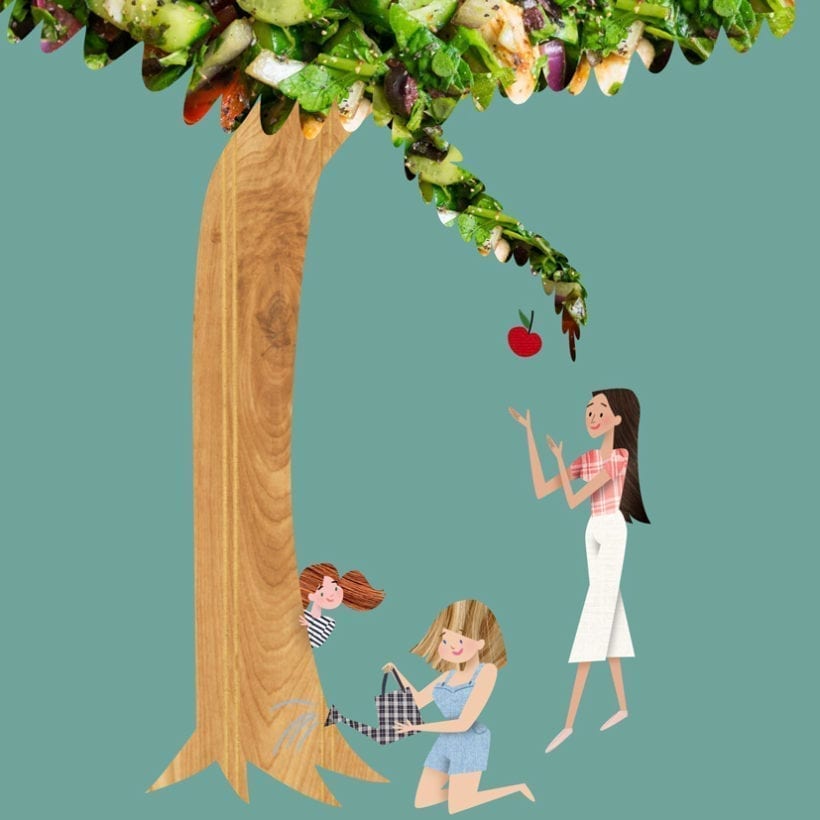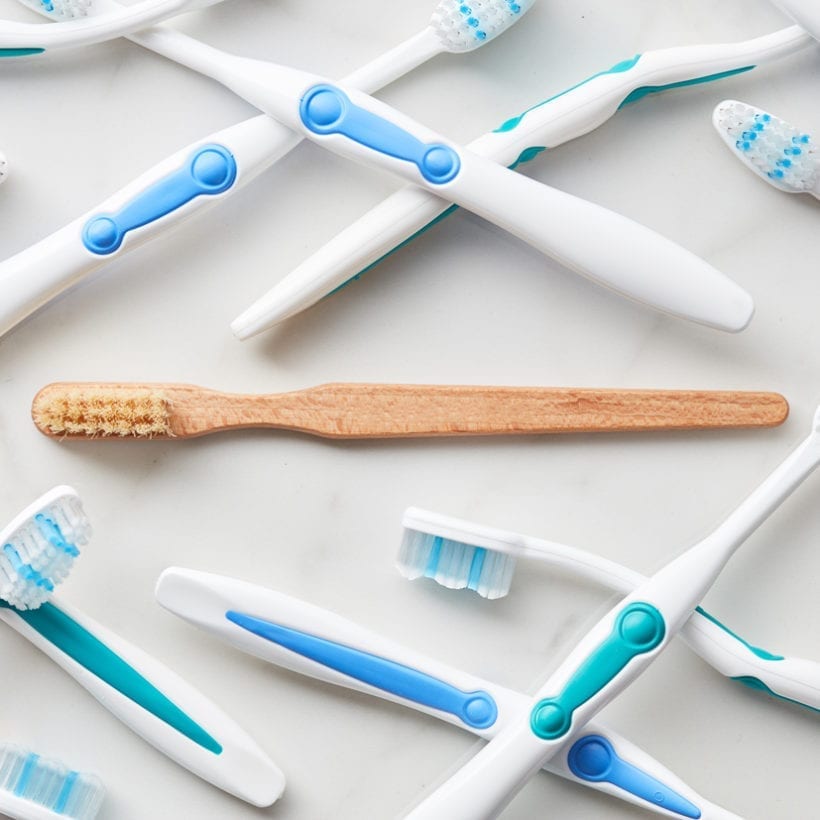Whether it is a rose quartz necklace, an amethyst body scrub or a celestial coaster, the trend for healing crystals has infiltrated all areas of our aesthetic lives. Thanks to the ever-growing interest in ancient spirituality and alternative medicine, this once niche trend has moved fully into the mainstream. In 2019, worldwide Google searches for the term ‘crystal healing’ increased 263% and type ‘crystal’ into hand-crafted platform Etsy and you will find over 1 million results. Despite Covid-19, sales for crystals have not wavered – unlike diamonds, which are expected to see a 20% decrease. Even the likes of Kylie Jenner, Adele and Miranda Kerr are all fans.
Encompassing a whole range of semi-precious stones, these crystals are believed to embody different healing powers. Crystal fans keep them close by and use them for a whole variety of reasons. For example, clear quartz is thought to improve concentration and memory while obsidian shields against negativity and citrine can boost creativity. While there is no scientific evidence to support their benefits, this has not impacted their popularity. However, there is a worryingly dark side to this photogenic wellness trend.
Naturally found in the earth, healing crystals are extracted by mining – a process which can damage both people and the planet.
Naturally found in the earth, healing crystals are extracted by mining – a process which can damage both people and the planet. “All mining has environmental impacts. Too often those impacts include irreparable environmental harm, or labor violations. When you consider that crystals provide no proven benefit beyond the aesthetic, it would be better if they were left in the ground,” Payal Sampat, Mining Director at Earthworks, the nonprofit organization dedicated to protecting communities and the environment from the adverse impacts of mineral development, said in a statement.
Trying to trace where your healing crystals have come from proves rather tricky. Firstly, there are not any organizations dedicated to policing the industry. “There are no worldwide regulations when it comes to the mining of healing crystals,” Jill Urwin, founder of She’s Lost Control, an online spiritual shop who specialize in sustainable stones, explained. Healing crystals are found in the earth across the world – often in places like Brazil, Indonesia, Myanmar and the Democratic Republic of Congo – but the supply chain to obtain them is a murky one. By the time a healing crystal reaches a shop in the Western world, it may have passed through many hands.
“Healing crystals are often extracted as a byproduct by miners who are looking for more expensive materials such as gold or precious stones like ruby or sapphire,” Urwin described. Subsequently, ensuring ethical human and environmental practices is difficult for crystal suppliers alone. “The change needs to come from the jewelry industry first and then trickle down to healing crystals too,” she noted.
Once the crystals have been mined from the earth, they need to be cut and polished. “This can be a very dangerous process. If workers are not wearing the correct mask, they can inhale silica particles and run the risk of catching Silicosis, a fatal disease similar to lung cancer,” Urwin said. Often this part of the crystal journey is outsourced to places like India and China where worker safety regulations are severely limited. For the customer, they might only be told the source of the crystal, not where it has been cut and polished.
For Urwin, this is why it was important when starting her She’s Lost Control Sustainable Mining Initiative that the cutting and polishing process took place alongside the mine she works with in Bahai, Brazil. The project she founded supports artisan small scale miners in this area of Brazil and the first stage involved providing the correct health and safety equipment for workers including masks. “Mining is a route out of poverty for millions around the world. We need to support these workers and businesses,” she highlighted.
https://www.instagram.com/p/CCmHgh2HMqA/
Except supporting sustainable mining initiatives like Urwin’s project in Brazil, what can customers do when buying healing crystals? Shopping around and asking questions is the most important thing. Kate Alexandra Deeley, an energy healer and crystal seller, recommends asking more questions. “Speak to the shop assistant and ask questions about their sourcing and their sustainability policy,” she said. If they are not open and honest about their products, it is probably better to shop elsewhere. “Any good crystal supplier should be able to tell you which mine the crystal came from and where the crystal was cut and polished,” Urwin added. “The more questions we ask, the more pressure we place on the supply chain.”
Much like with anything to do with sustainability, less is more is also a good approach. After all, crystals are a nonrenewable resource that will eventually run out. “They come from the earth and we should therefore respect them much like we would any natural source,” Deeley told me. “Do you really need ten crystals?” she asked. “I encourage people to work with them, harness and utilize them.” Instead, prioritize quality over quantity. After all, the biggest power we have is where we spend to choose the money we have.







